Everything You Need to Know About Great Ocean Walk’s Wildlife

Welcome to the Great Ocean Walk, one of Australia’s natural wonders full of beautiful panoramas, breathtaking flora, and fauna. Across the 110-kilometre trail, you’ll see the best of southern Australia in a variety of climates.
In addition to sharing what kinds of wildlife you can look forward to seeing, we’ll also be taking a look at The Otways — an area including Great Otway National Park that stretches from Torquay through the Otways Hinterland, to the Great Ocean Road.
At Walk91, we love the opportunity to get up close and personal with the natural world. That’s why all of our Victoria self-guided walking tours are respectful of the land we visit and we acknowledge the Gadubanud & Girai wurrung as the traditional owners of these beautiful areas.
If you’d like to experience Victoria’s trails for yourself, get in touch with our husband-and-wife team who will be happy to help make your Great Ocean Walk a holiday to remember. But, for now, let’s start virtually spotting the critters you’re likely to see in our neck of the woods!
Wildlife You Can See on the Great Ocean Road
On the Great Ocean Road, you can look forward to seeing many species of wildlife on your walk. From birds to mammals, this part of the world is a delight for the eyes.
See the Seals on the Great Ocean Road
Before you begin the walk, you may be lucky enough to see Australian fur seals in Apollo Bay. These friendly creatures are the clowns of the sea and you can even kayak amongst them. Apollo Bay Surf and Kayak run tours to the Marengo Seal Colony, based within the Marine National Park.
There are at least 100 seals in the colony and it is a delight to watch them jump into the ocean. These inquisitive creatures often swim over to see these strange visitors to their home! This experience is unforgettable.
You may also see seals at the Apollo Bay harbour, close to the Apollo Bay Sailing Club. They are attracted to the wonderful aroma of the fish cleaning stations! But don’t be tempted to feed them, as they can bite if you get too close.
Lastly, look out for seals resting on the isolated beaches of the Great Ocean Walk. You never know where one will pop up!
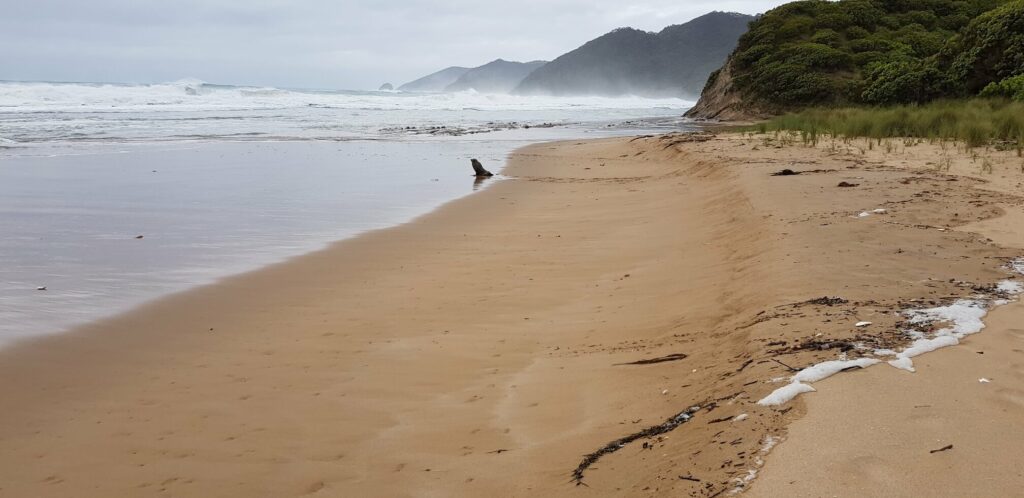
Mammals and Marsupials on the Great Ocean Walk
You’ll likely see many of the Australian greats whilst exploring the Great Ocean Walk, including the kangaroo! This marsupial is only found in Australia and the Eastern Grey Kangaroos are commonly sighted on the trail. You’ll recognise them by their pale bellies and furry grey backs. They usually appear late in the afternoons or early in the morning, when they emerge to snack on grass and other vegetation.
The kangaroo’s smaller relative, the Swamp Wallaby, can also be found on the trail. These little guys are strong swimmers and are also vegetarians. Keep an eye out for them beyond the trail, roaming around in tree ferns. These guys are often spotted in couples with a baby joey in the mother’s pouch. They have a unique, ‘low to the ground’ method of jumping along at high speed.
Keep your eyes on the ground for echidnas, who dig up dirt along the trail areas looking for ants to eat. While these creatures are usually shy and nocturnal, you may catch a glimpse of one on your walk. Remember to stand back and observe them quietly as they love taking cover in the undergrowth.
Potoroos are a member of the Rat Kangaroo family (meaning they are closely related to other macropods i.e. Kangaroos and Wallabies) but these lovely little creatures are also hard to spot as they can hop quickly into thick vegetation for cover when they feel threatened.
Therefore it is rare to see Potaroos on the trail but a sighting has recently been confirmed by a tourist, along with photographic evidence!
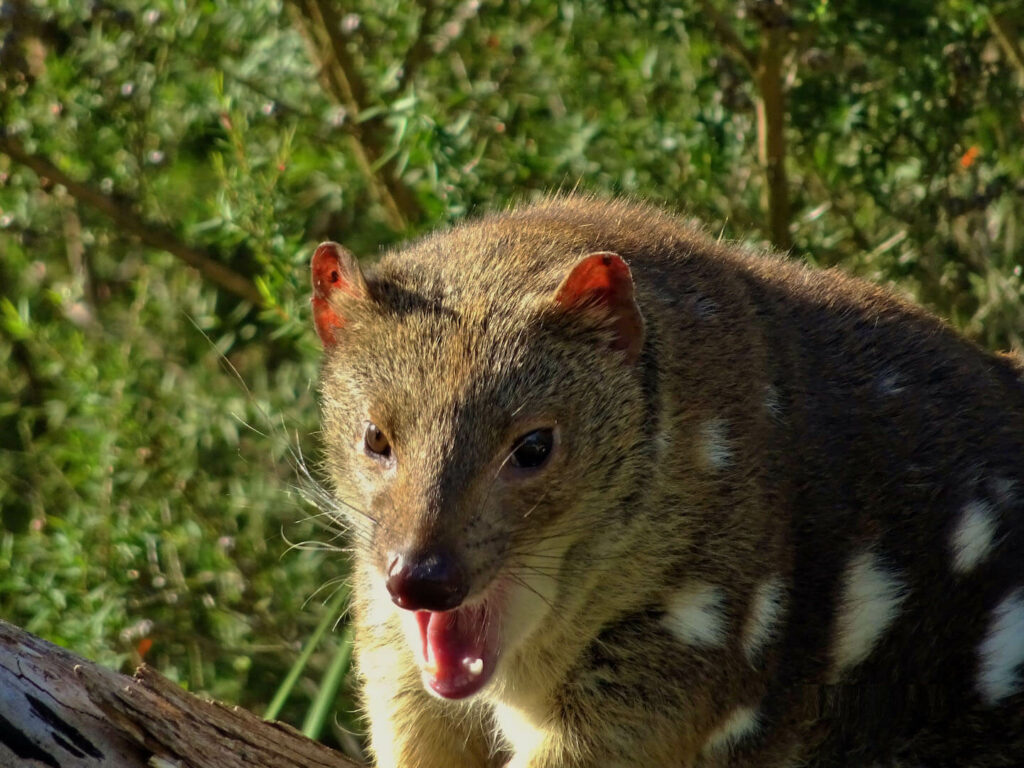
Our other less commonly spotted wildlife friends also include the the Tiger Quoll and the platypus.
Sadly the Tiger Quoll is near extinction, but the Conservation Ecology Centre near Cape Otway has won awards for its efforts to see the rehabilitation of this carnivorous marsupial species.
Remember, if you arrive in Apollo Bay to start your Great Ocean Walk experience with Walk91 early, a visit to Wildlife Wonders — which is also run by the Ecology Centre — is lots of fun and a wonderful way to support animal and tree conservation in the area.
The Tiger Quoll also goes by the common name Spotted-tailed Quoll and they are important predators in the Otways, eating a range of prey from native rats to possums, birds, reptiles, invertebrates, and even rabbits.
Tiger Quolls have beautiful white spots, long tails, and appear fox-like. They also love to climb so keep your eyes peeled on the ground but also up above! If you are lucky enough to spot one please report any sightings to the Ecology Centre’s hotline: 0 ‘I SPOTTED’ 1 (0 4 7768833 1)
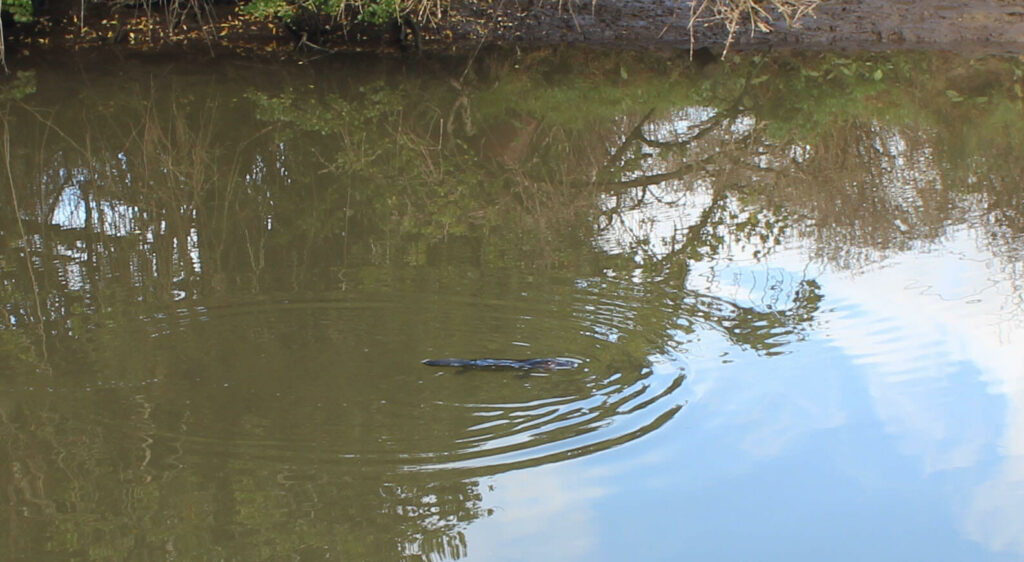
The platypus is also very elusive, but if you get up early you might just see one at the start of the Great Ocean Walk! We have spotted them in the Barham River as you walk out of Apollo Bay, so check out our blog on The Barham Backwater Restoration Project for more info.
If you watch out for ripples breaking the water’s surface, keep your eyes patiently fixed on the water and you may get a glimpse. Lake Elizabeth is a good viewing spot to see this egg-laying mammal.
Birds on the Great Ocean Walk
Looking up, keep your eyes peeled along the entire stretch of the Great Ocean Walk, from Apollo Bay to the 12 Apostles as you will most likely see gang-gang cockatoos, Rosellas and White Cockatoos, as well as wedge-tailed eagles soaring above the rocks in couples.
There are so many birds along the trail it is hard to list them all, but you may also see White-faced Herons, Crested Terns, Pacific Gulls, Red-necked Stints, Sooty Oystercatchers, Black Cormorants, and Ruddy Turnstones to name a few.
Please be careful as you walk out of Apollo Bay and onto the Great Ocean Walk to avoid nesting areas of the Hooded Plover (you will often see areas roped off). They love to lay their eggs on the beach above the high tide level, but sadly, as their eggs are almost impossible to see, its quite easy to step on them.
Also look out for the Magpies, they love swooping to protect their young and can get very cross at times if you are in their territory!
Fairy penguins can also be spotted on the isolated beaches along the trail and, although they may look very cute and cuddly, they are stronger than they look! They can dive down to 60m looking for their prey and love to munch on crabs and other crustaceans.
If you want to see these lovely creatures in bigger numbers, Philip Island has the largest colony of approx 20,000 penguins, whilst Warrnambool has the smallest at around 200.
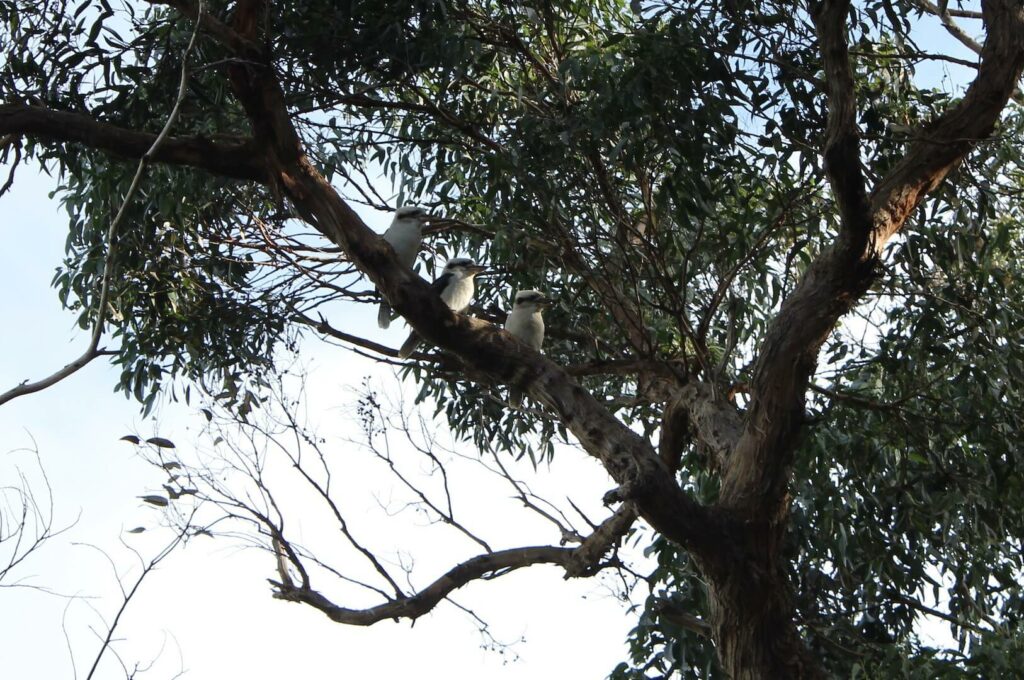
Snakes and Insects
Snakes such as the Tiger Snake and Brown Snake have also been sighted on the trail but, fortunately, none of our visitors have ever been bitten by a snake, so it’s very unlikely to happen. However, we would advise you not to go barefoot on the trail (apart from at the beach!).
If you do see a snake, give it a wide berth, and don’t approach it for photos. They love sunning themselves on warm dirt tracks, but often sneak away when they hear walkers approaching as they are shy creatures really!
Wildlife You Can See in the Otways
One creature that’s hard to miss in the Otways is the koala. These snoozy creatures sleep for up to 19 hours a day, meaning they’re easy to spot in the nooks of trees catching some z’s! Popular viewing spots include Kennett River on your way to the Great Ocean Walk and around Cape Otway.
In spring the female koalas often have a baby koala holding onto its back. Koalas are often sleepy during the day but at night can make a strange loud grunting noise. This is a big surprise to many people, so do not be frightened if you hear it!
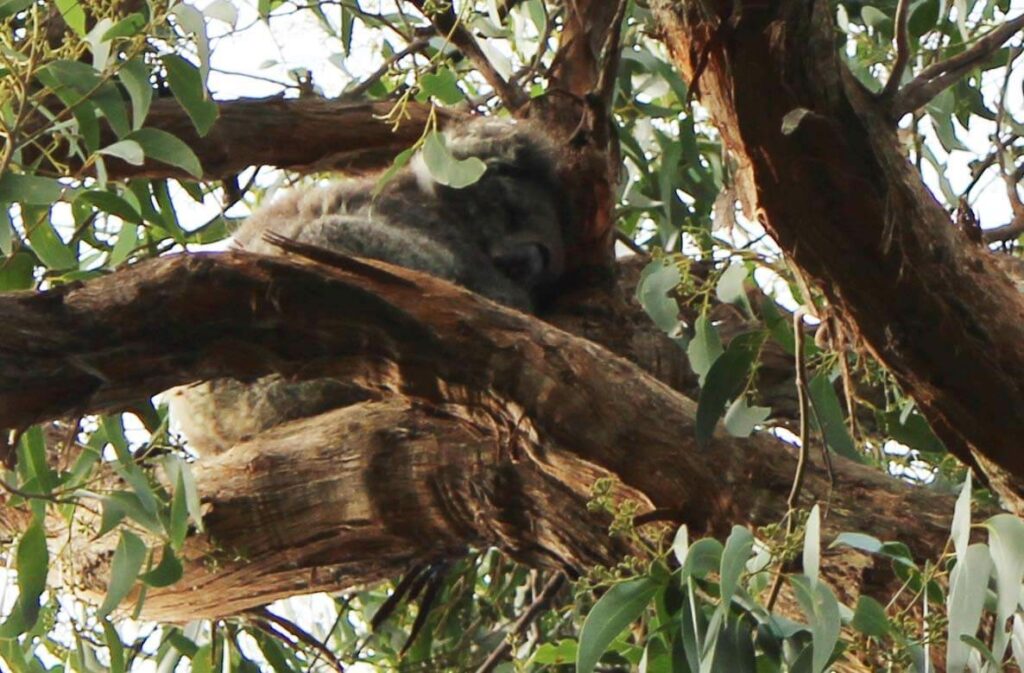
Common Brushtail Possums also live in the trees alongside koalas. Keep your eyes skyward for these cute marsupials. Recognisable by their bushy black tails, pointed ears, and shiny pink noses, both possums and koalas can be spotted around the Shelly Beach, Blanket Bay, and Cape Otway areas.
From creatures large to small, the Otways is also home to several different species of insects that feed the smaller mammals in the park, such as the Southern Brown Bandicoot, Broad-toothed Rat, and Swamp Antechinus (a small marsupial).
The Otways is also home (unfortunately) to introduced or feral animals such as deer, rabbits, and cats. Parks Victoria controls the numbers of these animals through methods such as introducing viruses for rabbits and poisonous bait for cats, as they are detrimental to the ecology of the native forest.
Given the wet atmosphere, the Otway rainforest means visitors may be lucky enough to see native glow worms, who thrive in these conditions. You’ll have to be very observant to see them though! These creatures are very small, leaving behind delicate silk ropes along their path.
If you are visiting between May and October, you may be lucky enough to see migrating whales. The Southern Right Whale got its name from being the ‘right’ whale to hunt (for oil and meat) when whaling stations were set up along the coast in the 1800s and were nearly made extinct in the process.
Finally, will you be lucky enough to spot the infamous Otway Panther? While many locals have sighted this beast, it has never been fully proven that it is not just a huge black cat!
Nancy Kininmonth, Walk91’s co-owner, also believes she spotted the panther on her first visit to the Otways many years ago. She said, “ I saw what I thought was a panther running through the fern trees along the side of the road. Mark thought I was joking, having already heard rumours of panther spottings, but I knew nothing of these alleged sightings.”
Walkers are encouraged to come and explore the Great Ocean Walk themselves to make their own conclusions on this! Please send us a photo if you see this unusual creature as there are many locals who would be very interested in discussing your photo at length!
The Best Time of Year to See Wildlife in Victoria
Many indigenous animals can be seen year-round on the Great Ocean Walk if you know where to look. So, whenever you embark upon your walk, you’ll be likely to see kangaroos, koalas, wallabies, emus, and echidnas.
For birdwatching, the Otways is home to hundreds of species of birds. Some live here year round, and others that migrate seasonally, so whenever you visit you will always be able to enjoy spotting a arge variety of our feathered friends. These are just some of the species you are likely to see across the Otways:
- Galah
- Nankeen Kestrel
- Striated Pardalote
- Willie Wagtail
- Crimson Rosella
- Southern Boobook
- Superb Fairy-Wren
- New-Holland Honeyeater
- Australian Magpie
- Kookaburra
- Gang-Gang Cockatoo
- Australasian Gannet
- Eastern Yellow Robin
- Pied Currawong
If you’d like a little more advice on when to embark on your epic walk, check out our resource: A Complete Guide to the Great Ocean Walk. Amongst travel tips, destination descriptions, and safety advice, we delve into the temperatures you can expect throughout the seasons.
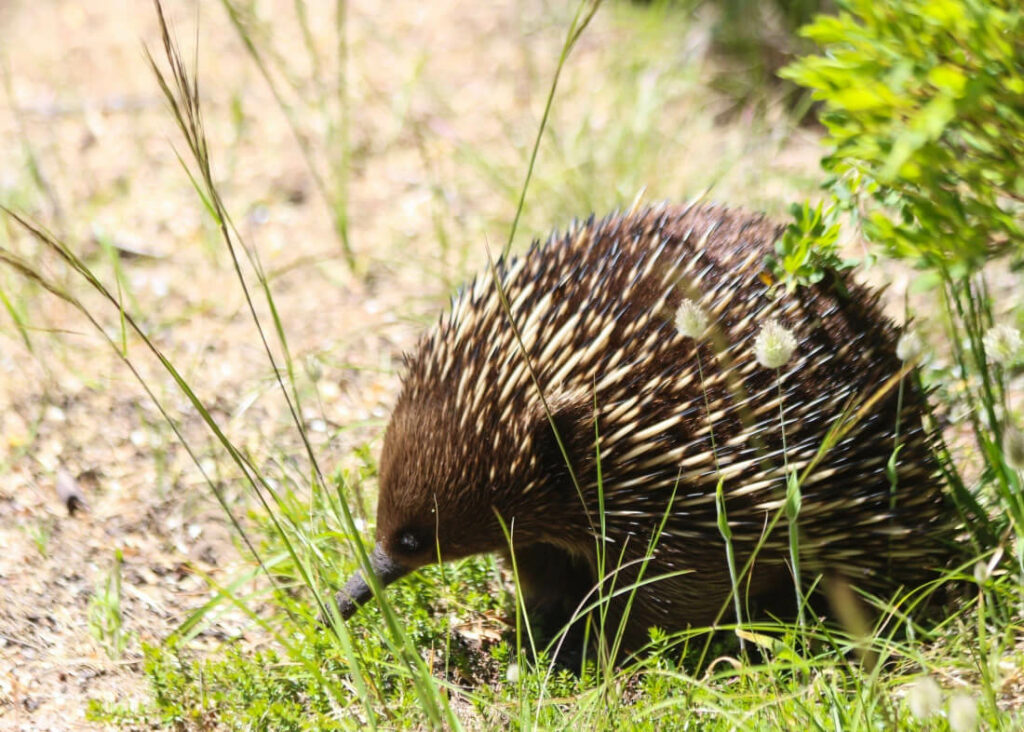
That wraps up our virtual guide to the wildlife of the Great Ocean Walk area. Are you ready to visit and spot these creatures for yourself? Whether you’d like try to one of our self-guided walks in Victoria or let us create a custom Great Ocean Walk Tour Package, we’ve got you covered!
If you have any questions about our walks or you’re thinking about planning a trip to Victoria and need a little advice, drop us an email. We’ll be more than happy to help with the planning side of things, so you just have to focus on spotting the wildlife along the trail.